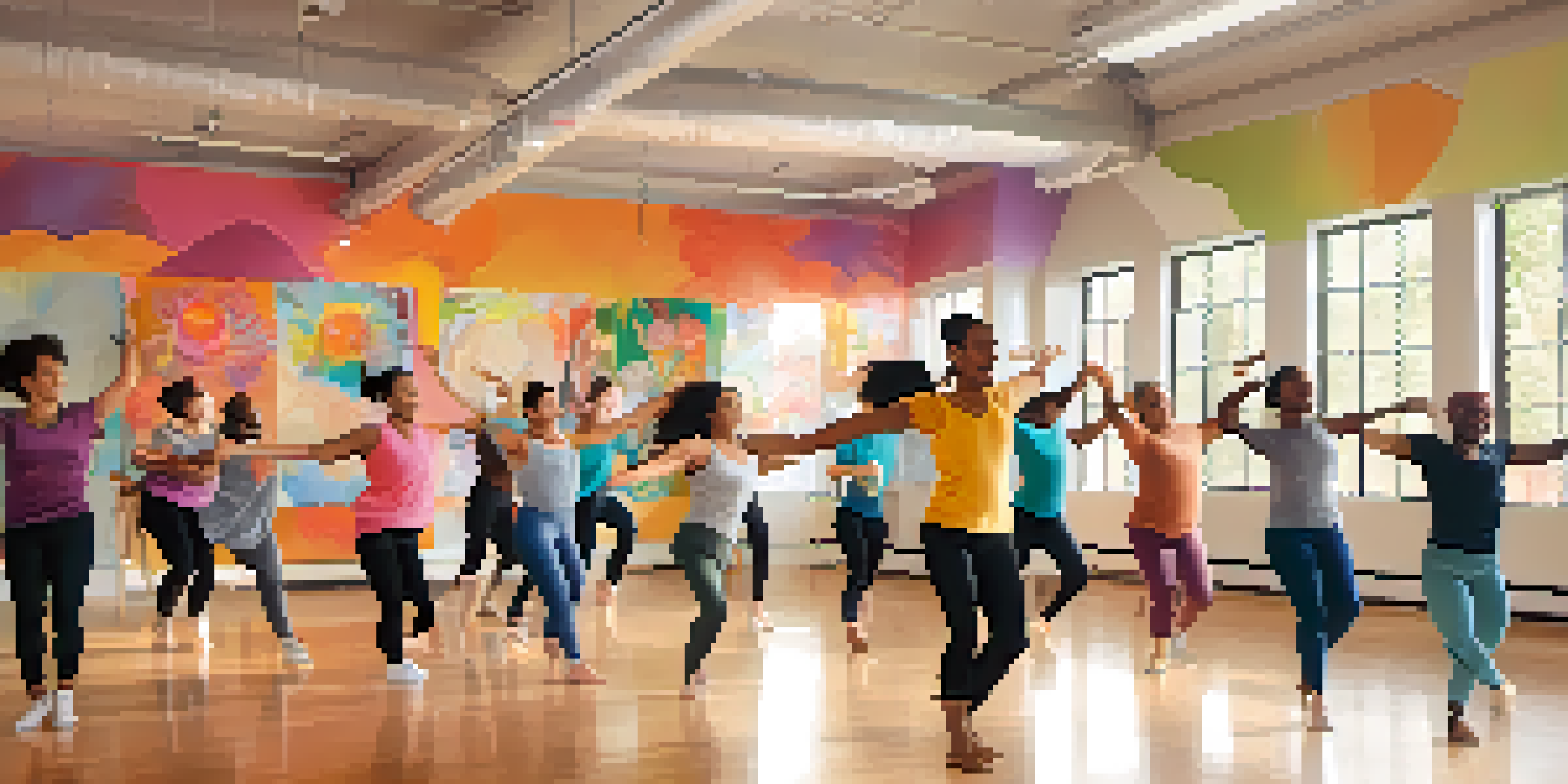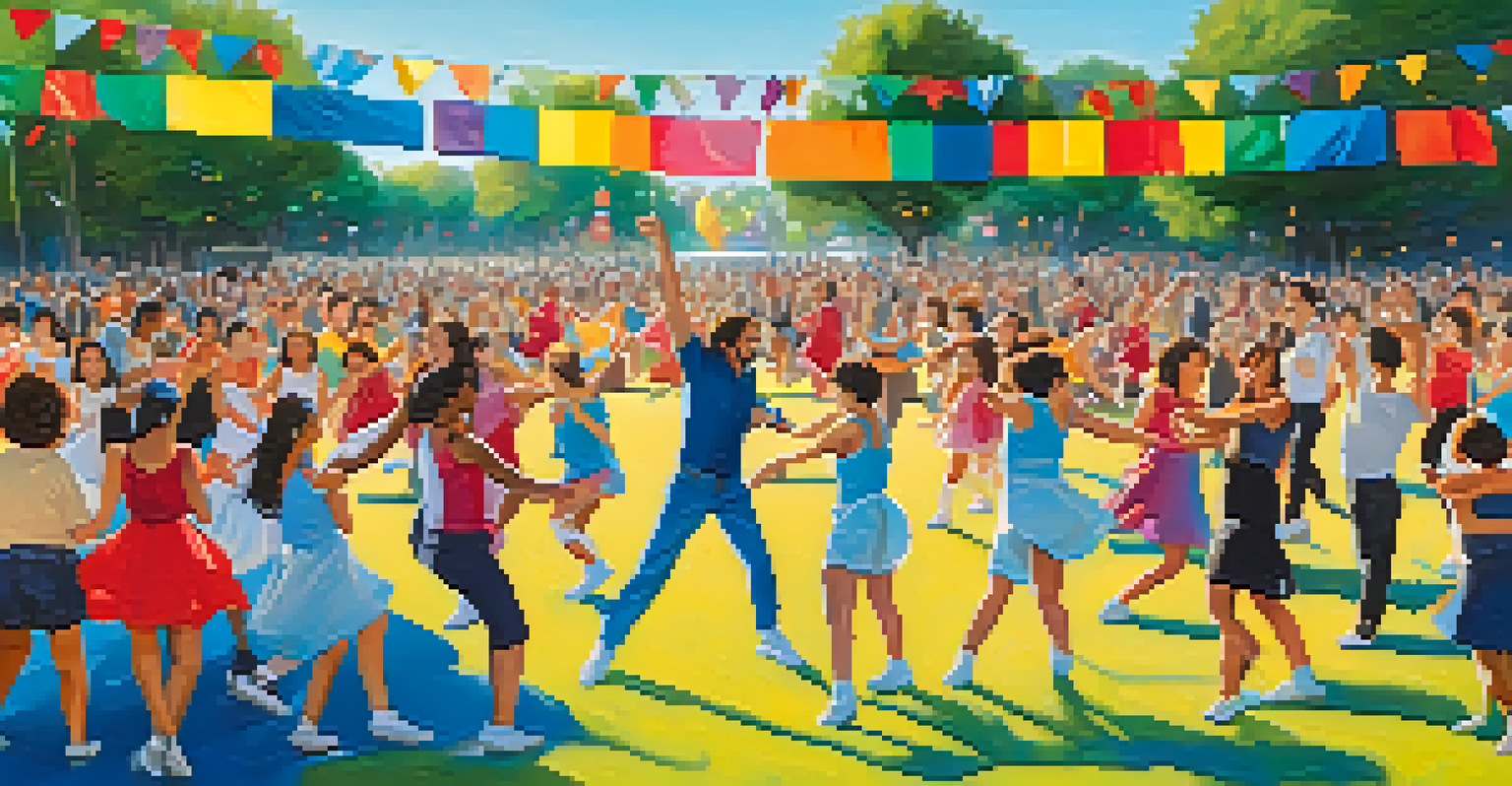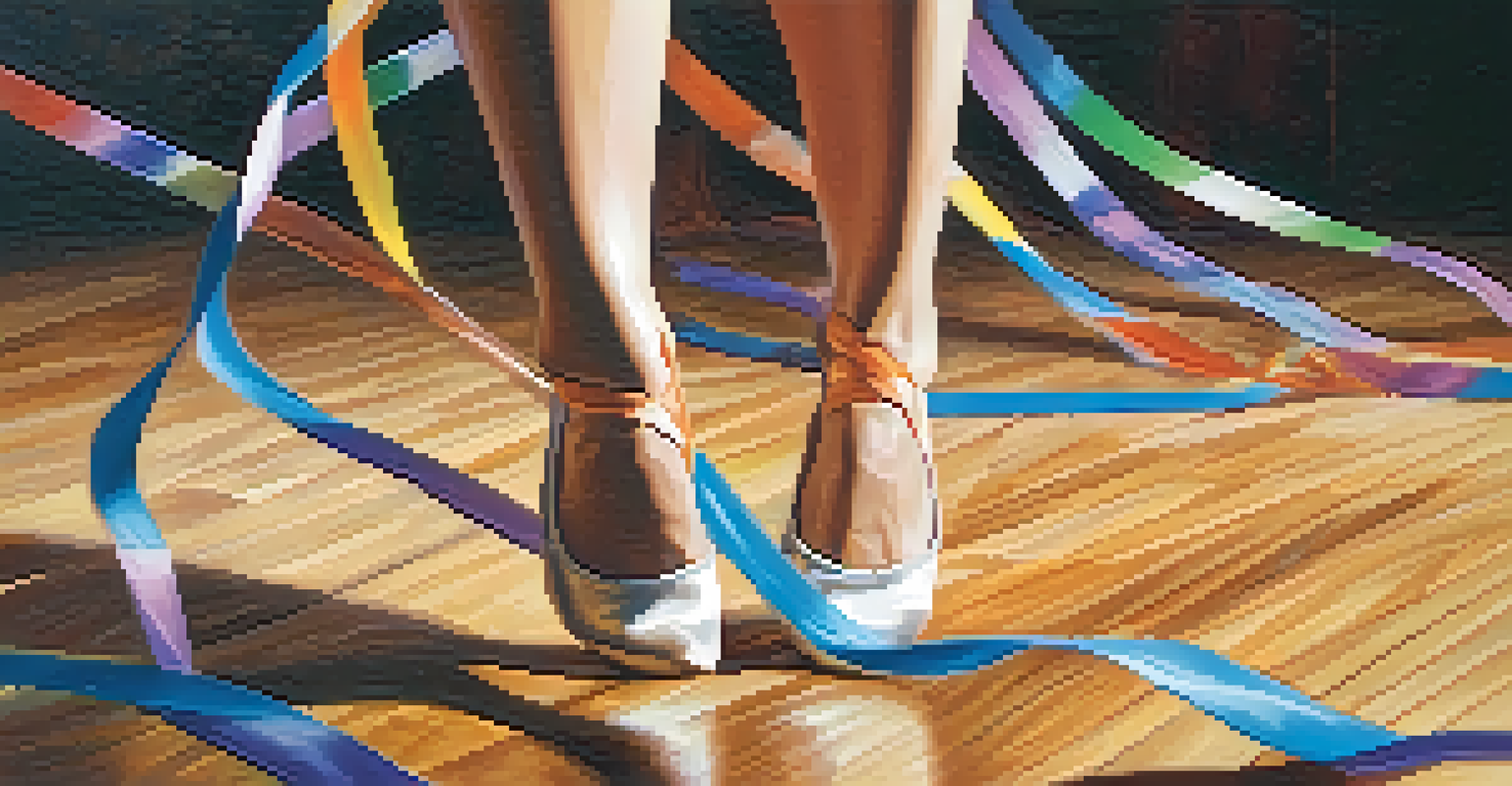Celebrating Individuality: Dance for Neurodiverse Expression

Understanding Neurodiversity and Its Impact on Expression
Neurodiversity refers to the natural variations in human brain function and behavior. This concept emphasizes that differences in thinking and processing information should be recognized and celebrated rather than stigmatized. Many neurodiverse individuals experience the world uniquely, which can significantly influence their modes of expression.
Dance is the hidden language of the soul.
For those on the autism spectrum, ADHD, or other neurodevelopmental conditions, traditional methods of communication may not fully capture their thoughts and feelings. This is where dance becomes an invaluable tool, offering a non-verbal outlet that allows for authentic self-expression. It creates a space where movement speaks louder than words.
By understanding neurodiversity, we can appreciate the diverse ways people relate to their environment. Dance serves as a bridge that connects these unique perspectives, allowing neurodiverse individuals to express themselves in ways that resonate deeply with their personal experiences.
Dance as a Universal Language for Expression
Dance transcends verbal communication, making it a universal language that can be understood by everyone. For neurodiverse individuals, the freedom of movement allows them to convey emotions and stories that might otherwise remain unspoken. This form of expression can be liberating and empowering.

Consider how a simple sway or a burst of energetic movement can communicate joy or excitement. The rhythm of dance can resonate with the feelings of individuals, creating a shared experience that fosters connection and understanding. In this way, dance becomes a powerful medium for individual expression.
Neurodiversity Celebrated Through Dance
Dance offers a powerful non-verbal outlet for neurodiverse individuals to express their unique perspectives and emotions.
Moreover, the physicality of dance can help neurodiverse individuals regulate their emotions. Movement releases endorphins and can reduce anxiety, making it an effective tool for emotional expression and mental well-being. This interplay of physical and emotional release highlights the beauty of dance as a form of self-expression.
Creating Inclusive Dance Spaces for All
In order to truly celebrate individuality through dance, it’s crucial to create inclusive spaces where everyone feels welcome. Studios and organizations should prioritize accessibility by providing sensory-friendly environments and adapting activities to suit various needs. This ensures that all individuals, regardless of their neurodiversity, can participate comfortably.
Neurodiversity is not a deficit; it's a different way of being.
Inclusive dance spaces also embrace diverse teaching methods that cater to different learning styles. By offering visual cues, physical demonstrations, and verbal instructions, instructors can engage neurodiverse learners effectively. This approach not only supports individual expression but also fosters a sense of belonging within the dance community.
Creating these environments requires collaboration and understanding from both instructors and participants. When everyone works together to build inclusive dance spaces, the joy of movement can be shared, enriching the experience for all involved.
The Therapeutic Benefits of Dance for Neurodiverse Individuals
Dance therapy is gaining recognition for its benefits, particularly among neurodiverse individuals. It combines movement with therapeutic practices to help individuals express emotions and improve social skills. This holistic approach can lead to significant improvements in mental health and emotional well-being.
For many neurodiverse individuals, dance therapy can offer a safe space to explore their feelings without the pressure of traditional communication. This freedom can lead to profound insights and healing, as participants learn to connect with themselves and their bodies. The therapeutic aspects of dance can be both empowering and transformative.
Inclusive Spaces Enhance Participation
Creating sensory-friendly and adaptable dance environments ensures that all individuals, regardless of neurodiversity, feel welcome and included.
By engaging in dance therapy, neurodiverse individuals not only express themselves but also develop coping mechanisms for navigating everyday challenges. The skills learned through this process can enhance their overall quality of life, making dance a vital component of their personal growth and development.
Showcasing Talent: Performance Opportunities for All
Performance opportunities play a crucial role in celebrating individuality within the dance community. They provide a platform for neurodiverse individuals to showcase their unique talents and perspectives, fostering pride and confidence. These performances can help challenge stereotypes and promote understanding among diverse audiences.
By creating inclusive performances, dance companies can highlight the diverse stories and experiences of neurodiverse dancers. This not only empowers the performers but also educates the audience, breaking down barriers and encouraging acceptance. Every performance becomes a celebration of individuality, allowing viewers to appreciate the beauty of diversity.
Moreover, the act of performing can be a powerful experience for neurodiverse individuals. It allows them to step into the spotlight, share their voice, and connect with others through the universal language of dance. This sense of belonging reinforces the idea that every individual has something valuable to contribute.
Community Engagement Through Dance Workshops
Engaging the community through dance workshops is an effective way to promote neurodiversity awareness. These workshops can bring together individuals of all backgrounds, encouraging collaboration and understanding. By inviting neurodiverse individuals to lead or participate, the community can learn firsthand about their unique experiences.
Workshops can be tailored to accommodate various skill levels and preferences, making them accessible to everyone. This inclusivity not only fosters a sense of community but also provides valuable opportunities for neurodiverse individuals to express themselves creatively. The shared experience of learning and moving together can strengthen community bonds.
Dance Therapy Supports Growth
Engaging in dance therapy helps neurodiverse individuals improve emotional well-being and develop valuable coping mechanisms.
Furthermore, community engagement through dance workshops can spark conversations about neurodiversity, helping to dispel myths and misconceptions. By creating a space for dialogue, participants can share their stories and insights, promoting empathy and understanding within the broader community.
The Future of Dance for Neurodiverse Expression
As awareness of neurodiversity continues to grow, the future of dance as a means of expression looks promising. More organizations are recognizing the importance of inclusivity, creating programs and initiatives that celebrate diverse talents. This shift reflects a broader societal change towards acceptance and understanding.
Innovative approaches to dance education and therapy are emerging, focusing on personalized experiences that cater to individual needs. With advancements in technology and teaching methods, the possibilities for neurodiverse expression through dance are expanding. This evolution is an exciting development for both dancers and audiences alike.

Ultimately, the future of dance for neurodiverse individuals is about embracing individuality and fostering a culture of acceptance. By continuing to celebrate and support diverse expressions, we can create a world where every dancer feels valued and empowered to share their unique voice through the art of movement.